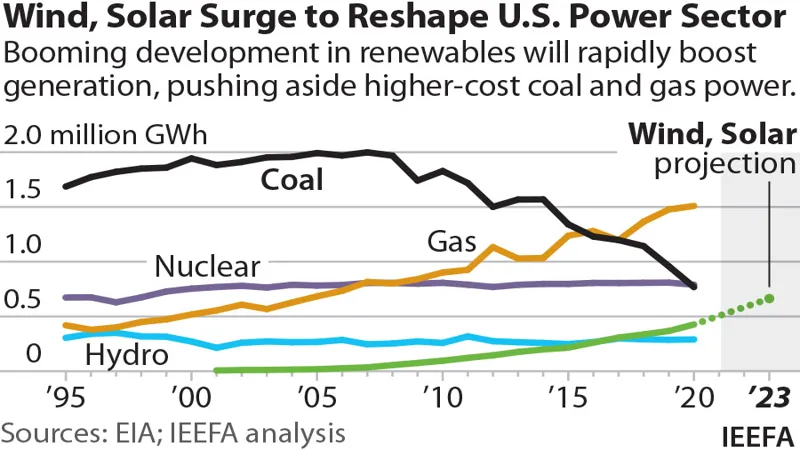
U.S. Energy Transition: Record Investments Amid Challenges
In an era where the urgency of climate action has never been more pressing, a recent report highlights the remarkable yet challenging landscape of the U.S. energy transition. Last year, the nation made a historic investment of $338 billion, predominantly in renewable technologies, especially solar energy, which surged to new heights by adding 49 gigawatts of capacity. However, despite these strides, overall carbon emissions saw a slight increase, underscoring the complexities of balancing rising energy demands with sustainability goals. As electricity consumption is projected to soar in the coming years, driven largely by the tech sector’s insatiable appetite for power, the quest for innovative solutions to meet this demand while curbing emissions becomes imperative.
| Category | Details |
|---|---|
| U.S. Investment in Energy Transition | $338 billion in 2024, a record-breaking amount. |
| Carbon Emissions Change | Overall carbon emissions increased by 0.5% despite investments. |
| Leading Energy Source | Solar energy added 49 gigawatts of capacity, leading other technologies. |
| Electricity Demand Contribution | Solar and wind account for nearly 25% of electricity demand. |
| Natural Gas Demand | Increased by 1.3%, contributing to carbon emissions rise. |
| Carbon Emission Reduction Since 2005 | Overall emissions decreased by nearly 16%; power-related emissions down 40%. |
| Future Electricity Demand Forecast | Expected to rise by 15.8% by 2029. |
| Drivers of Electricity Demand | Increased demand from data centers for cloud and AI operations. |
| Tech Companies’ Investments in Power Sources | Microsoft, Google, and Amazon investing in nuclear power and renewables. |
| Amazon’s Energy Agreements | Added 476 megawatts, with agreements largely in solar energy. |
| Efficiency Improvements | Minor adjustments could create 76 gigawatts of additional capacity. |
| U.S. vs China Investment | U.S. spent 1.3% of GDP; China spent 4.4%. |
The Energy Transition in the U.S.
The energy transition in the United States is an important topic as the nation strives to reduce carbon emissions. Last year, the U.S. made a historic investment of $338 billion to improve its energy systems. This money was used to enhance renewable energy sources, especially solar and wind power. However, despite this significant investment, the overall carbon emissions did not decrease as much as hoped, highlighting that more work is needed to make a real difference.
Solar energy led the charge by adding an impressive 49 gigawatts of new electrical capacity in 2024, making it the most significant contributor to the energy transition. Together with wind power, these renewable sources now provide nearly 25% of the electricity demand in the U.S. This shift shows how citizens and businesses are increasingly relying on clean energy, but the challenge remains to find ways to further reduce carbon emissions while meeting growing energy needs.
Frequently Asked Questions
What was the total investment in the U.S. energy transition last year?
The U.S. invested a record-breaking $338 billion in energy transition efforts last year, aiming to reduce carbon emissions.
How much new solar energy capacity was added in 2024?
In 2024, the U.S. added 49 gigawatts of new solar energy capacity, leading the way in electricity generation.
What percentage of U.S. electricity demand do solar and wind energy account for?
Solar and wind energy together account for nearly 25% of electricity demand in the U.S.
Why did U.S. carbon emissions increase by half a percent?
U.S. carbon emissions rose by half a percent due to a 1.3% increase in natural gas demand, mainly from industrial users.
What is driving the increasing electricity demand in the U.S.?
The main driver of rising electricity demand is the surge in data centers, especially for cloud operations and AI initiatives.
What investments are tech companies making for future power needs?
Tech companies like Microsoft, Google, and Amazon are investing in nuclear power and expanding renewable energy sources to meet future electricity demands.
How can the U.S. improve its energy efficiency?
The U.S. can improve energy efficiency by scheduling tasks during low demand periods and relocating them to areas with more capacity.
Summary
A recent report shows that the U.S. invested a record $338 billion in energy transition efforts last year, with solar energy leading the charge by adding 49 gigawatts of new capacity. Despite this, overall carbon emissions slightly increased due to rising natural gas use. While emissions have dropped by nearly 16% since 2005, electricity demand is expected to surge by 15.8% by 2029, driven mainly by tech companies expanding data centers. To meet this demand, major firms like Microsoft and Amazon are investing in both nuclear and solar energy, highlighting the need for efficient energy practices to stay competitive.